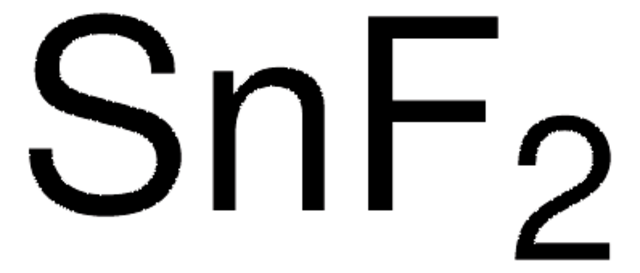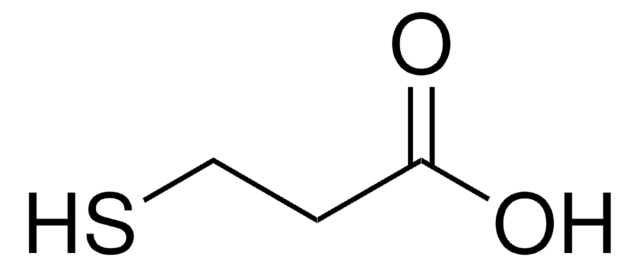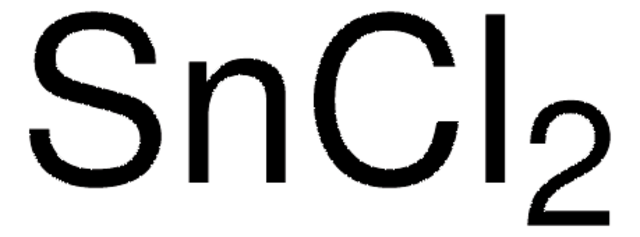409308
Tin(II) iodide
AnhydroBeads™, −10 mesh, 99.99% trace metals basis
Sinonimo/i:
Stannous iodide, Tin diiodide
About This Item
Prodotti consigliati
Nome Commerciale
AnhydroBeads™
Livello qualitativo
Saggio
99.99% trace metals basis
Forma fisica
beads
Impurezze
≤150.0 ppm Trace Metal Analysis
Dimensione particelle
−10 mesh
P. eboll.
714 °C (lit.)
Punto di fusione
320 °C (lit.)
Densità
5.28 g/mL at 25 °C (lit.)
Stringa SMILE
I[SnH2]I
InChI
1S/2HI.Sn/h2*1H;/q;;+2/p-2
JTDNNCYXCFHBGG-UHFFFAOYSA-L
Cerchi prodotti simili? Visita Guida al confronto tra prodotti
Descrizione generale
Applicazioni
Caratteristiche e vantaggi
1) Reduced uptake rate of environmental moisture minimizes caking, dusting, and static buildup for repeated easy handling.
2) Higher crucible packing densities and lower volatility in high-temperature solid state procedures.
3) Easier pneumatic loading of salts to sample chambers due to less clogging issues associated with powdered salt counterparts.
Note legali
Non trovi il prodotto giusto?
Prova il nostro Motore di ricerca dei prodotti.
Accessorio
Avvertenze
Danger
Indicazioni di pericolo
Classi di pericolo
Acute Tox. 4 Inhalation - Acute Tox. 4 Oral - Eye Dam. 1 - Met. Corr. 1 - Skin Corr. 1B - Skin Sens. 1 - STOT RE 2 - STOT SE 3
Organi bersaglio
Cardio-vascular system,hematopoietic system, Respiratory system
Codice della classe di stoccaggio
8A - Combustible corrosive hazardous materials
Classe di pericolosità dell'acqua (WGK)
WGK 3
Punto d’infiammabilità (°F)
Not applicable
Punto d’infiammabilità (°C)
Not applicable
Dispositivi di protezione individuale
Eyeshields, Faceshields, Gloves, type P2 (EN 143) respirator cartridges
Scegli una delle versioni più recenti:
Possiedi già questo prodotto?
I documenti relativi ai prodotti acquistati recentemente sono disponibili nell’Archivio dei documenti.
I clienti hanno visto anche
Il team dei nostri ricercatori vanta grande esperienza in tutte le aree della ricerca quali Life Science, scienza dei materiali, sintesi chimica, cromatografia, discipline analitiche, ecc..
Contatta l'Assistenza Tecnica.
















